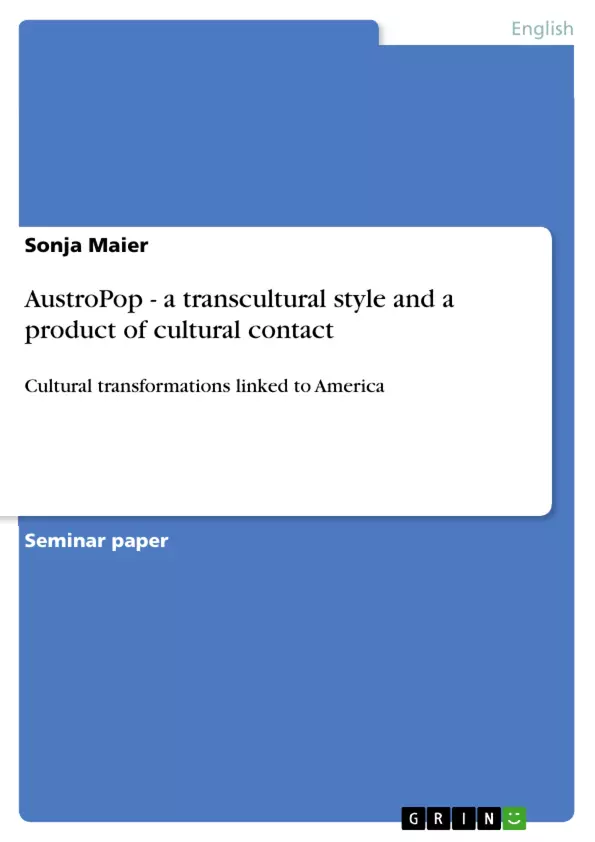In this paper, I have tried to describe what a cultural transformation can be, using Austropop as a specifically Austrian example. For that, I first have rethought articles by Erward Larkey, Richard Wagnleitner and Gerd Gemünden. Their contributions and the critical class debates were necessary in order to understand cultural exchanges in a German speaking context. Going back in history and reconsidering the roots of certain developments can shed light on the reasons for their existence, as in the case of Austropop. Therefore, I have added a short history of Austropop that focuses more on the how and why than on its actors. In chapter three, I have analyzed a particular Austropop artist and compared him to his American 'counterpart' and pointed out the differences, similarities and especially novelties that came to life through a cultural exchange.
Inhaltsverzeichnis (Table of Contents)
- Introduction
- AustroPop: a transcultural style and a product of cultural contact
- The imaginary America - Cultural transformations linked to America
- Short History of Austropop
- An example of cultural translation
- The Boss of America – Bruce Springsteen
- Da Chef ausn Gemeindebau - Ostbahn-Kurti
- Fire vs. Feuer
- Conclusion
Zielsetzung und Themenschwerpunkte (Objectives and Key Themes)
This paper explores the phenomenon of Austropop, a specifically Austrian musical style, as an example of cultural transformation. The author aims to understand how Austropop emerged through contact with foreign cultures, particularly English-speaking countries, and to analyze the process of its adaptation and integration into Austrian culture.
- Cultural exchange and its impact on national identity
- The role of popular music in cultural transformation
- The creative reception and adaptation of foreign cultural influences
- The process of de-anglicization and re-ethnification in music
- The relationship between Austropop and the student protest movement
Zusammenfassung der Kapitel (Chapter Summaries)
- Introduction: This chapter introduces the concept of cultural exchange and its significance in the formation of national identity. The author reflects on their own evolving understanding of Austrian culture and the role of Austropop within it.
- AustroPop: a transcultural style and a product of cultural contact: This chapter delves into the definition and origins of Austropop, highlighting its transcultural nature and its emergence as a result of foreign influences, particularly from English-speaking countries. The author utilizes Edward Larkey's "model of diffusion and tradition-formation for popular music innovations" to analyze the phases of Austropop's development, from initial consumption to re-ethnification.
- An example of cultural translation: This chapter analyzes a specific example of cultural translation by comparing an Austropop artist, Ostbahn-Kurti, with his American counterpart, Bruce Springsteen. The author explores the differences, similarities, and novelties that emerge through this transcultural comparison.
Schlüsselwörter (Keywords)
Austropop, cultural transformation, transcultural style, cultural exchange, national identity, popular music, reception, de-anglicization, re-ethnification, student protest movement, diffusion, tradition-formation, cultural imperialism.
- Quote paper
- Sonja Maier (Author), 2009, AustroPop - a transcultural style and a product of cultural contact, Munich, GRIN Verlag, https://www.grin.com/document/166980



